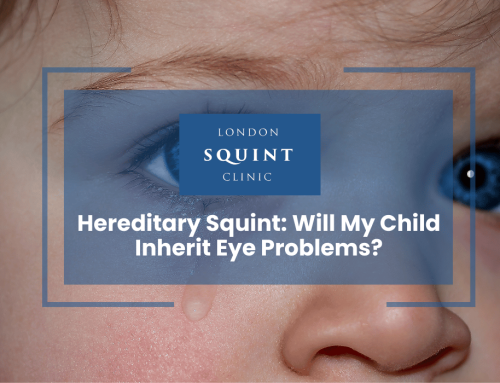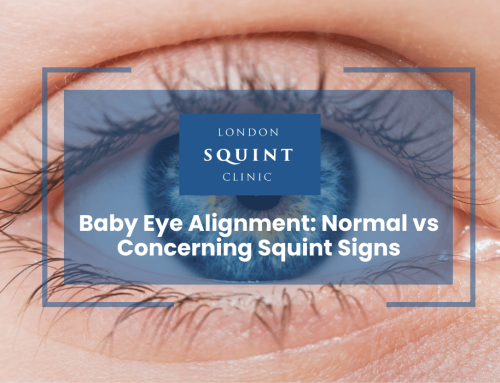Why Do Some Children Need Re-Do Squint Surgery? What Parents Should Know
Re-Do Squint Surgery
- Squint surgery success rates range from 60-80% with a single operation, meaning 20-40% of children may require additional procedures.
- Common reasons for repeat surgery include under/over-correction, muscle healing variations, progressive conditions, and changes in refractive errors.
- The optimal age for squint surgery depends on the type of squint, with infantile esotropia often best treated between 6-12 months of age.
- Recovery typically follows a predictable timeline: 1-3 days for immediate post-operative symptoms, 1-2 weeks for return to normal activities, and 4-6 weeks for complete healing.
- While serious complications are rare (less than 1%), parents should be vigilant for signs of infection or unusual symptoms during recovery.
- Neurological conditions can affect surgical outcomes and may increase the likelihood of needing multiple procedures.
- Before agreeing to re-do surgery, parents should thoroughly discuss the reasons for the first surgery’s limitations and how the approach will differ for the second procedure.
Table of Contents
- Understanding Squint Surgery: Success Rates and Expectations
- Common Reasons Why Children May Need Repeat Squint Surgery
- What Is the Best Age for Child Squint Surgery?
- How Long Does Recovery Take After Pediatric Squint Surgery?
- Potential Side Effects and Complications of Squint Surgery
- Neurological Connections: When Squint Indicates Other Issues
- Making Informed Decisions: Questions to Ask Before Re-do Surgery
Understanding Squint Surgery: Success Rates and Expectations
Squint surgery (strabismus surgery) is a common procedure performed to correct misalignment of the eyes in children. While many parents hope for a one-time solution, it’s important to understand that the squint eye surgery success rate varies depending on several factors. Current research indicates that approximately 60-80% of children achieve satisfactory alignment with a single operation, meaning that a significant percentage may require additional interventions.
The success of squint surgery depends on multiple factors including the type of squint (esotropia, exotropia, or vertical deviations), the child’s age at surgery, the presence of amblyopia (lazy eye), and any underlying neurological conditions. Congenital or infantile squints typically have different success rates compared to acquired squints that develop later in childhood.
Parents should approach squint surgery with realistic expectations. The primary goals of surgery are to improve eye alignment, enhance binocular vision (the ability of both eyes to work together), and achieve a better cosmetic appearance. However, perfect alignment and complete restoration of binocular vision may not always be achievable with a single procedure. Understanding that re-do surgery might be necessary is an important part of the treatment journey for some families.
Common Reasons Why Children May Need Repeat Squint Surgery
Several factors can contribute to the need for repeat squint surgery in children. Understanding these reasons can help parents prepare for the possibility of additional interventions:
Under-correction or Over-correction
The most common reason for re-do surgery is that the initial procedure resulted in either under-correction (the eyes remain misaligned in the same direction) or over-correction (the eyes become misaligned in the opposite direction). Achieving precise alignment is challenging, as surgeons must estimate the appropriate amount of muscle adjustment based on measurements taken while the child is awake, but operate when the child is under anaesthesia.
Muscle Healing and Scarring
The way eye muscles heal after surgery can affect long-term outcomes. Some children develop scarring or adhesions that pull the eye back into a misaligned position. The body’s healing response varies between individuals and can sometimes work against the surgical correction.
Progressive Conditions
Some forms of strabismus are progressive, meaning the condition naturally worsens over time. In these cases, initial surgery may be successful temporarily, but the underlying condition continues to progress, necessitating additional surgery.
Accommodative Factors
In accommodative squints related to focusing efforts, children may experience changes in their refractive error (need for glasses) as they grow. These changes can affect eye alignment even after successful surgery, particularly if glasses compliance is inconsistent.
Pediatric strabismus recurrence is not uncommon, and parents should be aware that understanding squint in children as a potentially ongoing condition rather than a one-time fix can help set appropriate expectations for treatment outcomes.
What Is the Best Age for Child Squint Surgery?
The question of the best age for child squint surgery is one that concerns many parents. While there is no universal squint surgery age limit, timing considerations are crucial for optimal outcomes. The appropriate age depends on several factors:
Type of Squint
For infantile esotropia (inward-turning squint present from birth), research suggests that surgery between 6-12 months of age may offer the best chance for developing binocular vision. For acquired squints that develop later, the timing may be different based on when the condition appears and how it responds to non-surgical treatments.
Stability of the Squint
Ideally, the angle of squint should be stable for at least 3-6 months before surgery. This stability helps ensure that the surgical plan addresses the true extent of the misalignment rather than a temporary variation.
Prior Non-surgical Management
Before considering surgery, children with accommodative squints should have an adequate trial of glasses and/or amblyopia treatment. Surgery is typically considered only after these conservative measures have been optimised.
Child’s Cooperation for Examinations
Accurate measurements are essential for surgical planning. Some very young children may not cooperate sufficiently for precise measurements, which could affect surgical outcomes.
While early intervention is generally beneficial for visual development, rushing into surgery without addressing other factors like refractive errors or amblyopia may lead to suboptimal results. The decision about timing should be individualised based on the child’s specific condition and development, with the goal of maximising visual potential while minimising the need for repeat procedures.
How Long Does Recovery Take After Pediatric Squint Surgery?
Squint surgery recovery in children typically follows a predictable timeline, though individual experiences may vary. Understanding what to expect can help parents prepare and provide appropriate support during the healing process.
Immediate Post-operative Period (1-3 days)
The first few days after surgery are characterised by redness, mild to moderate discomfort, and some swelling. Children may experience sensitivity to light and increased tearing. Most children can return home the same day as surgery, but will need close monitoring. Pain is usually manageable with prescribed medications and tends to improve significantly within 48-72 hours.
Early Recovery (1-2 weeks)
During this period, the visible redness begins to fade, though some pinkness may persist. Most children can return to school or nursery after 7-10 days, though contact sports and swimming should be avoided. Eye drops or ointments are typically prescribed to prevent infection and reduce inflammation.
Complete Healing (4-6 weeks)
Full healing of the eye muscles and surrounding tissues takes approximately 4-6 weeks. During this time, the final alignment of the eyes becomes more apparent as swelling resolves and the muscles adapt to their new positions. Follow-up appointments are crucial during this period to monitor healing and assess the success of the surgery.
Precautions After Squint Surgery
Important precautions include preventing children from rubbing their eyes, maintaining good hand hygiene, administering prescribed eye drops as directed, avoiding swimming for at least 2-3 weeks, and limiting vigorous physical activities for 4-6 weeks. These measures help ensure optimal healing and reduce the risk of complications that might necessitate further interventions.
Potential Side Effects and Complications of Squint Surgery
While squint surgery is generally safe for children, parents should be informed about potential squint surgery side effects and complications. Being aware of these possibilities helps in recognising when medical attention might be needed during recovery.
Common Side Effects
Most children experience temporary redness, swelling, and discomfort at the surgical site. Double vision is common in the first few days or weeks as the brain adjusts to the new eye alignment. Sensitivity to light and increased tearing are also normal in the immediate post-operative period. These effects typically resolve without specific treatment as healing progresses.
Less Common Complications
More significant complications, though less common, include:
- Infection: Signs include increasing redness, pain, discharge, or fever
- Allergic reaction: To suture materials or medications
- Slipped or lost muscle: Resulting in significant under-correction or over-correction
- Conjunctival cysts: Small fluid-filled sacs that may form at the surgical site
- Persistent double vision: Lasting beyond the expected adjustment period
- Anterior segment ischaemia: A rare but serious complication involving reduced blood flow to the front portion of the eye
The risk of serious complications is low, with studies reporting major complications in less than 1% of cases. However, the possibility of requiring additional surgery due to under-correction, over-correction, or recurrence is more significant, with rates varying between 20-40% depending on the type of squint and other individual factors.
Parents should be vigilant during the recovery period and contact their ophthalmologist promptly if they notice unexpected symptoms or worsening of the child’s condition after the initial recovery phase.
Neurological Connections: When Squint Indicates Other Issues
While many cases of childhood squint are isolated conditions related to eye muscle imbalance or refractive errors, some instances of strabismus have neurological underpinnings. Understanding these connections is crucial, particularly when considering why initial surgery might not have been successful.
Neurological Conditions Associated with Squint
Several neurological issues can cause or contribute to strabismus in children:
- Cranial nerve palsies: Particularly affecting the 3rd, 4th, or 6th cranial nerves that control eye movements
- Cerebral palsy: Often associated with strabismus due to broader motor control issues
- Hydrocephalus: Increased pressure in the brain can affect eye alignment
- Brain tumours: Particularly those affecting the brainstem or areas controlling eye movements
- Chiari malformation: Structural abnormalities at the base of the skull can impact eye muscle control
- Genetic syndromes: Such as Duane syndrome, Möbius syndrome, or Brown syndrome
Implications for Surgical Success
When squint has a neurological basis, the success rate of surgery may be lower, and the likelihood of requiring multiple surgeries increases. This is because the underlying neurological issue continues to influence eye muscle function even after surgical realignment. In these cases, surgery aims to improve alignment as much as possible, but complete correction and restoration of binocular vision may be more challenging to achieve.
Children with neurological conditions may also experience changes in their squint over time as their condition progresses or responds to treatment, necessitating adjustments to their eye care plan. For these children, a multidisciplinary approach involving ophthalmologists, neurologists, and other specialists provides the most comprehensive care.
Making Informed Decisions: Questions to Ask Before Re-do Surgery
When faced with the possibility of repeat squint surgery for your child, being well-informed helps you make the best decision for their care. Here are essential questions to discuss with your child’s ophthalmologist before proceeding with re-do surgery:
Understanding the Need for Additional Surgery
- Why exactly did the first surgery not achieve the desired results?
- What has changed since the first surgery that might affect the outcome of a second procedure?
- Is there evidence that a second surgery will provide better or more lasting results?
- Are there any non-surgical alternatives we should consider before proceeding with another operation?
Surgical Approach and Expectations
- How will the surgical approach differ from the first procedure?
- What is the success rate for re-do squint surgery in cases similar to my child’s?
- What degree of improvement can realistically be expected?
- Is this likely to be the final surgery, or might additional procedures be needed?
Timing Considerations
- What is the optimal timing for the second surgery?
- How long should we wait after the first procedure?
- Are there developmental considerations that make timing particularly important?
Recovery and Follow-up
- Will recovery differ from the first surgery?
- What specific follow-up care will be needed?
- What signs would indicate that the second surgery is or isn’t working as expected?
Remember that squint treatment is often a journey rather than a one-time intervention. A good ophthalmologist will welcome your questions and partner with you to make decisions in your child’s best interest. Maintaining open communication about your concerns and expectations helps ensure that you and your child’s healthcare team are aligned in your approach to managing their condition.
Frequently Asked Questions
How successful is squint surgery in children?
Squint surgery in children has a success rate of approximately 60-80% with a single operation. Success depends on factors including the type of squint (esotropia, exotropia, or vertical deviation), the child’s age, presence of amblyopia, and any underlying neurological conditions. While many children achieve satisfactory alignment with one procedure, 20-40% may require additional surgeries for optimal results.
At what age should a child have squint surgery?
The optimal age for squint surgery varies by condition. For infantile esotropia, surgery between 6-12 months may offer the best chance for developing binocular vision. For acquired squints, surgery timing depends on when the condition appears and its stability. Ideally, the angle of squint should be stable for 3-6 months before surgery, and non-surgical treatments like glasses should be optimized first. The decision should be individualized based on the child’s specific condition.
Why might my child need a second squint surgery?
Common reasons for repeat squint surgery include under-correction or over-correction of the initial misalignment, muscle healing and scarring that pulls the eye back out of alignment, progressive strabismus conditions that naturally worsen over time, and changes in accommodative factors related to the child’s focusing ability and refractive error. Neurological factors may also contribute to recurrence in some cases.
How long does it take to recover from pediatric squint surgery?
Recovery from pediatric squint surgery follows a typical timeline: 1-3 days for immediate post-operative symptoms (redness, discomfort, swelling), 1-2 weeks for early recovery when children can usually return to school, and 4-6 weeks for complete healing of eye muscles and tissues. During recovery, children should avoid rubbing their eyes, swimming (for 2-3 weeks), and vigorous physical activities (for 4-6 weeks).
What are the risks of squint surgery in children?
While squint surgery is generally safe, potential risks include common side effects (temporary redness, swelling, discomfort, double vision) and less common complications such as infection, allergic reactions to sutures or medications, slipped or lost muscles, conjunctival cysts, persistent double vision, and rarely, anterior segment ischemia. The risk of serious complications is less than 1%, though the possibility of needing additional surgery ranges from 20-40%.
Can squint in children indicate neurological problems?
Yes, some cases of childhood squint can indicate underlying neurological issues. Conditions associated with strabismus include cranial nerve palsies (3rd, 4th, or 6th nerves), cerebral palsy, hydrocephalus, brain tumors, Chiari malformation, and certain genetic syndromes like Duane syndrome. When squint has a neurological basis, surgical success rates may be lower and multiple surgeries more likely, as the underlying condition continues to affect eye muscle function.
What questions should I ask before agreeing to a second squint surgery?
Before agreeing to repeat squint surgery, ask: why the first surgery didn’t achieve desired results; what has changed since the first procedure; the evidence that a second surgery will provide better outcomes; whether non-surgical alternatives exist; how the surgical approach will differ; the success rate for re-do surgery in similar cases; realistic expectations for improvement; whether additional procedures might be needed; optimal timing considerations; and specific recovery and follow-up requirements.
Find out if you are suitable for Double Vision Treatment
Not everyone is eligible for double vision surgery.
Find out if you could benefit from this life-changing surgery by taking the quick self-suitability quiz below:
Our most popular procedures

Hello, I’m Nadeem Ali
I’m one of the few eye surgeons in the world with 100% focus on Squint and Double Vision Surgery.
I have 24 years of eye surgery experience, and worked for 13 years as a Consultant at London’s renowned Moorfields Eye Hospital.
In 2023, I left the NHS to focus fully on treating patients from across the world at the London Squint Clinic. You can read more about me here.
There’s lots of information on the website about: squint surgery, double vision surgery and our pricing.
The most rewarding part of my job is hearing patients tell me how squint or double vision surgery has changed their lives. You can hear these stories here.
Mr Nadeem Ali
MA MB BChir MRCOphth FRCSEd(Ophth)





